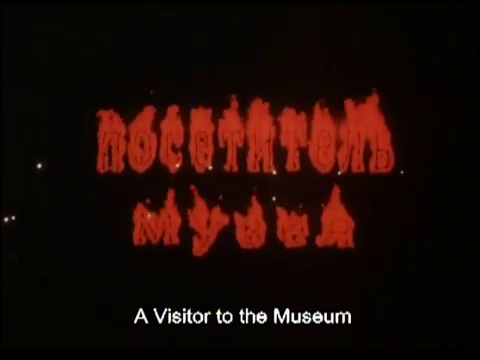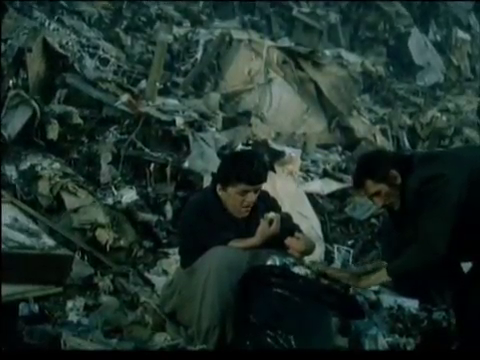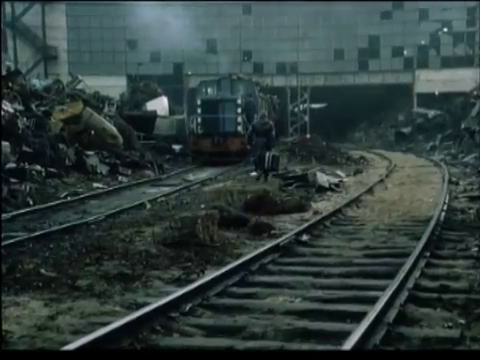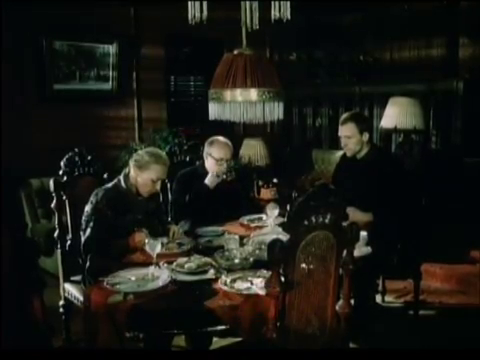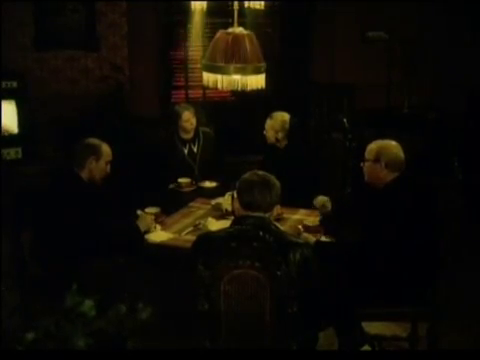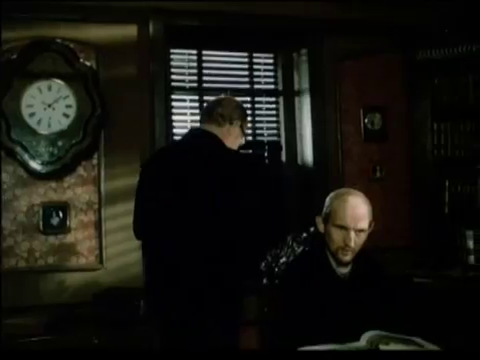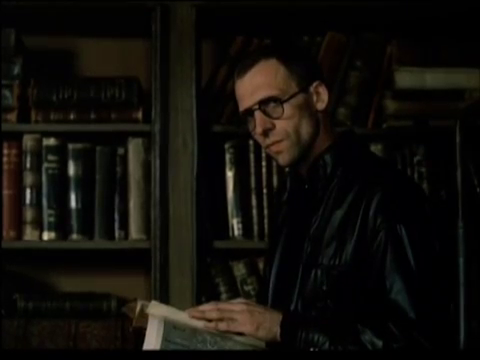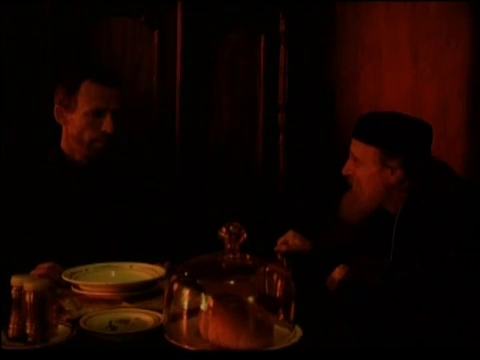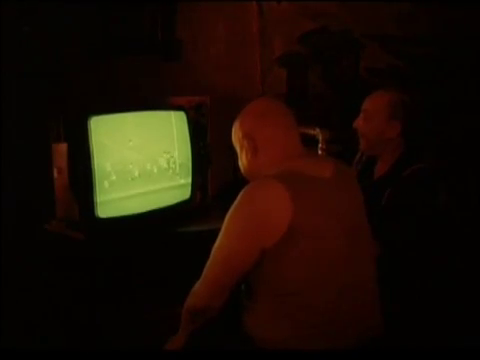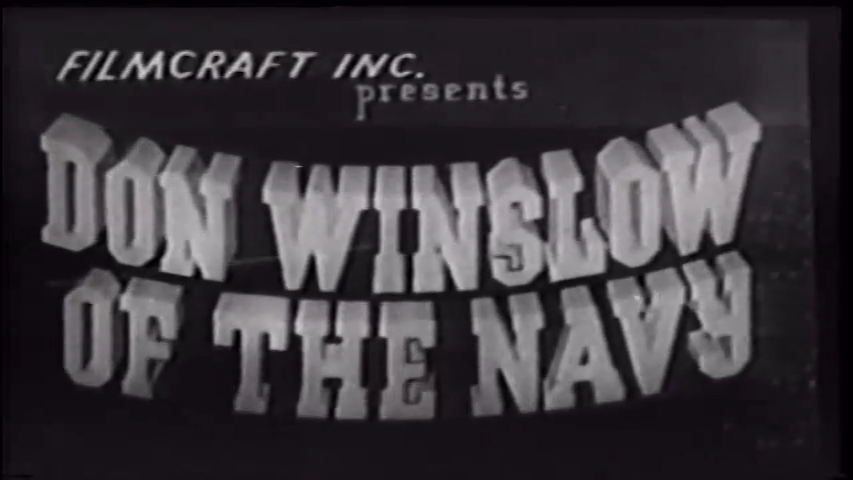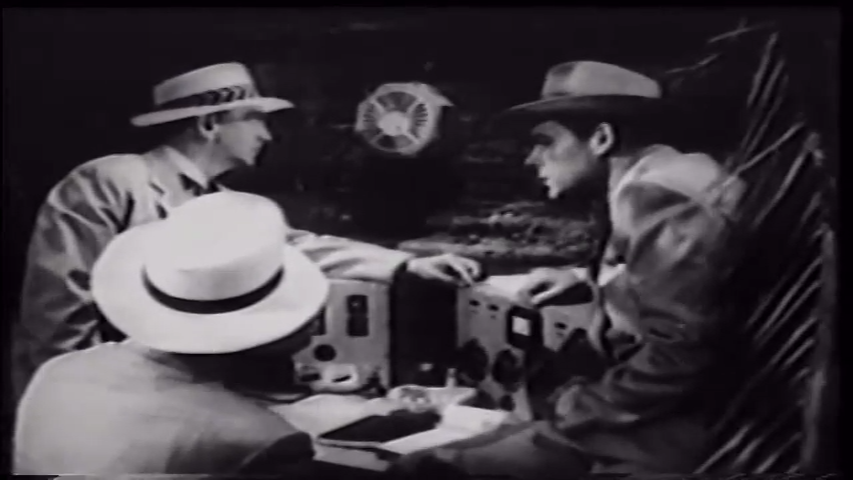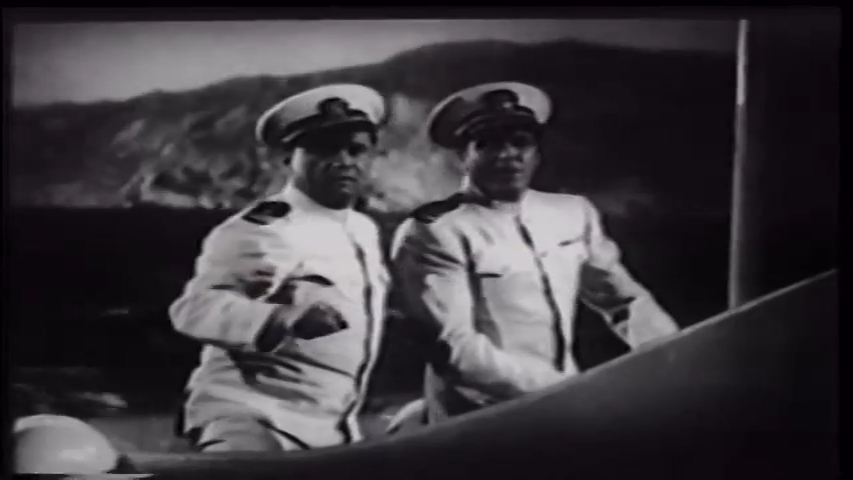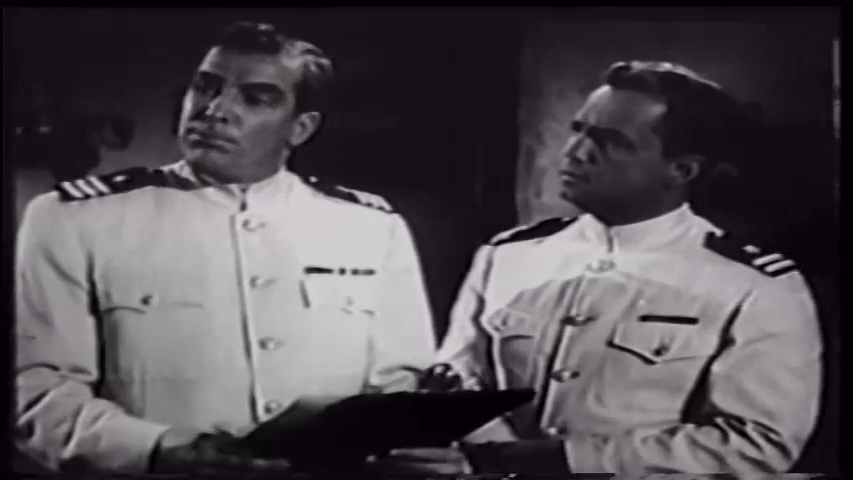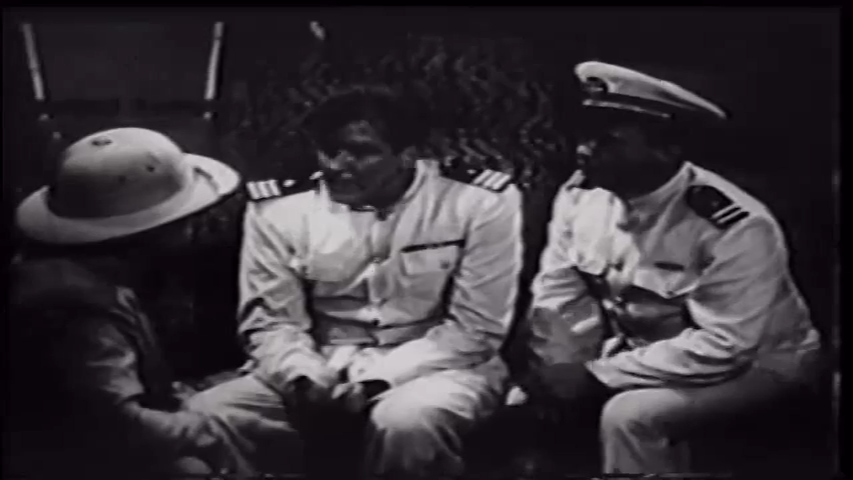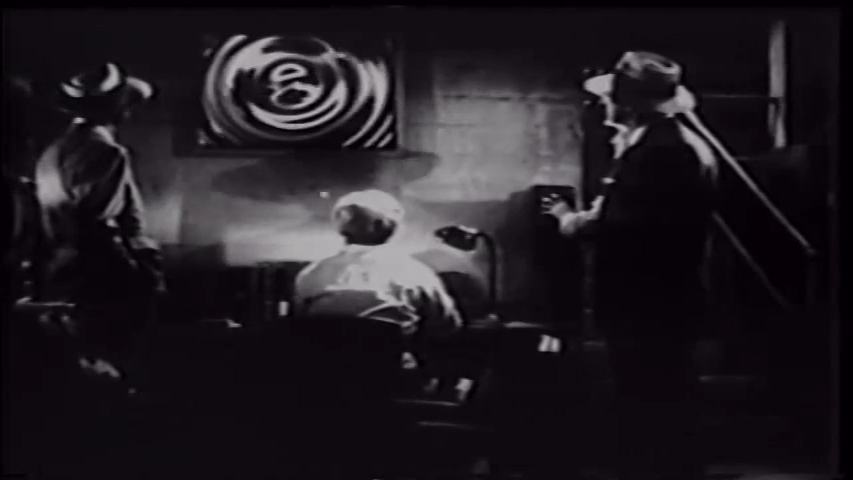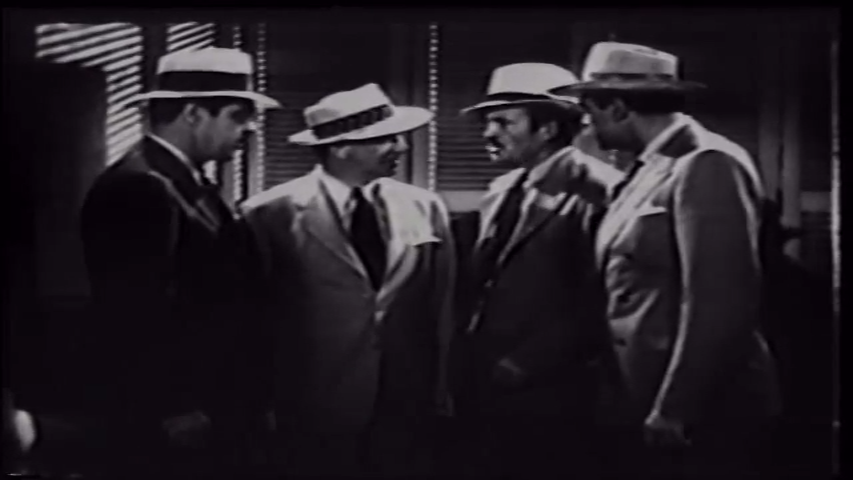Uncategorised
-
#474 – A Visitor to the Museum (1989)
A Visitor to the Museum (1989)
Film review #474
Director: Konstantin Lopushanky
SYNOPSIS: In a seemingly post-apocalyptic world, a man visits the shoreline from the city to visit a museum that is only accessible one week every year when the tide is low enough. He is following the rumour that somewhere inside is a portal to another world, where one can escape the hell that is the one he lives in has become…
THOUGHTS/ANALYSIS: A Visitor to the Museum is a 1989 soviet post-apocalypse film directed by Konstantin Lopushanky. The film is set sometime after an unspecified ecological disaster has ravaged the planet: many people have become mutants and are locked up in reservations to be used as slave labour and such, while what remains of the unmutated live in cities. We aren’t given too much detail on the state of the world or what happened to it, but the backstory isn’t really important: like a lot of post-apocalypse films, how the world ended doesn’t mean much when you’re just trying to survive day-to-day in a new harsh world. A man visits the coast from the city hoping to visit a museum of relics from the old world buried beneath the sea. The path to the museum is accessible only once a year when the tides are low enough, and the man is following a rumour that within the museum is a portal to another world to escape the horrors of the one he currently lives in. The story of the film is very abstract and never hinges on definitives: a lot of the plot is casually explained as the man has tea with the family he is staying with, and they talk about the state of the world as very much matter-of-fact, in contrast to the true hell that the mutant “degenerates” are constantly experiencing.
Konstantin Lopushanky, the director of this film, worked on Andrei Tarkovsky’s Stalker film, and it definitely shows: the themes of isolation and desolation in a post-apocalyptic world and trying to find a way out are shared between the two, and there are very similar camera techniques and effects used to convey this. Lopushansky, however, always feels like Tarkovsky’s apprentice, and never really surpasses the master that is Tarkovsky, or offer anything different. The weak links in the film are definitely how the story reveals itself, and offers very little direction or clue to what is going on. Obviously, the film is meant to be ambiguous and centres around a loss of meaning in the post-apocalypse, but the film feels a bit too ambiguous in centring the main character and certain aspects of the film so you never know where they are or what’s going on. The plot points that do offer something include the contrast between the unmutated, who are unbothered atheists, and the God-fearing “degenerates” who scream out bible verses and quotes, even though none of them know what any of it means because the meaning of the bible has been lost.
The production of the film feels very considered, and again obviously taking inspiration from Tarkovsky. The outdoor location shots looks great, particularly the mountains of garbage and rubble that our protagonist traverses, which is apparently what most of the world looks like now. The landscape shots that emphasise the isolation of the protagonist abandoned amidst nature also works well. There’s also the large crowds of mutants in certain scenes give off an eerie feeling, as they move and act in seemingly genuine terror. Lopushansky uses the colour red to completely light many of the scenes, and it provides a good bit of consistency throughout.
This is definitely not a feel-good film: it is the end of the world, and we’re meant to feel it, the only hope of escape is this absurd rumour the protagonist is chasing about a portal to another world, which as the only option, shows just how bad things are, but again the unmutated just sitting around and discussing over tea as just a simple matter-of-fact furthers that strange contradiction. Overall, Visitor to a Museum definitely tries to capture some of that Tarkovsky magic of slow, epic films, but it never really hits the mark completely, nor does it offer anything new or original to the Tarkovsky formula. It’s not a bad film, and it received some decent recognition and awards, but again falls short of the master due to leaving things too ambiguous and without direction.
-
#436 – Don Winslow of the Navy (1942)
Don Winslow of the Navy (1942)
Film review #436
Directors: Lewis D. Collins, Ray Taylor
SYNOPSIS: Commander Don Winslow of the U.S. Navy is assigned to stop a foreign spy ring that is intent on sabotaging the construction of a new naval base on an island in the Pacific Ocean. Winslow and his friends battle against the head of the spy ring, known only as “The Scorpion” and seek to foil his evil schemes across land, sea and air…
THOUGHTS/ANALYSIS: Don Winslow of the Navy is a 1942 film serial comprised of twelve chapters, and is based on the U.S. navy approved comic strip character of the same name. The story concerns Commander Winslow being assigned to stop a spy ring from sabotaging the construction of a new naval base in the Pacific Ocean. There’s not really anything special to say about the plot; it is a fairly standard setup that is found in nearly every wartime serial. While it is to be expected that these serials served as propaganda at the time for the war effort, Don Winslow was a character that was sanctioned and approved by the U.S. navy, so while this means that the uniforms and representation of the navy are fairly accurate, it probably means that there was a lot of oversight regarding what he should and shouldn’t do. I think this is probably the reason why he rarely gets into fistfights or other messy situations (although he does more so than in the sequel, where he never gets rough with anyone). Whereas the pre-wartime serials had plenty of lead characters that would don masks to conduct vigilante missions against the enemy, pre and post-war serials typically reserved such costumes and roles for the villains, while making leads that were victorious American soldiers.
The characters are about what you’d expect from a serial, with Winslow being the face of the navy in the serial, and being expectedly heroic and patriotic. His fellow navy officer “Red” serves as his friend and backup in the action scenes, and Mercedes Colby fills the single female role. The villains are also pretty standard, with a bunch of henchmen being led by a man who is only known as “The Scorpion,” who as usual is a white man in make-up to “look” Japanese. We only ever see him, however, on a screen in the spy’s secret base, and there is no final showdown with him (he is however, confronted in the sequel). One very distracting thing about The Scorpion is that with the close-ups of his face on the screen, you can clearly tell the actor is reading his lines as his eyes move left to right, which is quite distracting.
There’s plenty of stock footage used of navy vessels and submarines that makes the action a bit more exciting, which again is probably owed to the fact that the serial had the involvement of the U.S. navy (although I’m led to believe that the submarine that shows up in the stock footage is a British submarine). The models used for the airplanes and such, are far less convincing. The cliffhangers usually end up with Winslow getting caught in an explosion or a collapsing building, and usually walking away with nothing more than a limp. Again, fairly standard resolution to the chapter cliffhangers, and obviously they’re not going to show a navy officer getting seriously hurt if they’re being portrayed as strong invincible heroes of the war. Overall, Don Winslow of the Navy is what you would expect from a wartime serial. It’s not particularly interesting and neither does it offer anything new or original. The use of stock footage of ships and navy vessels gives it a larger sense of scale, but it’s a product of wartime propaganda that serves almost exclusively that purpose, and not worth seeking out.
